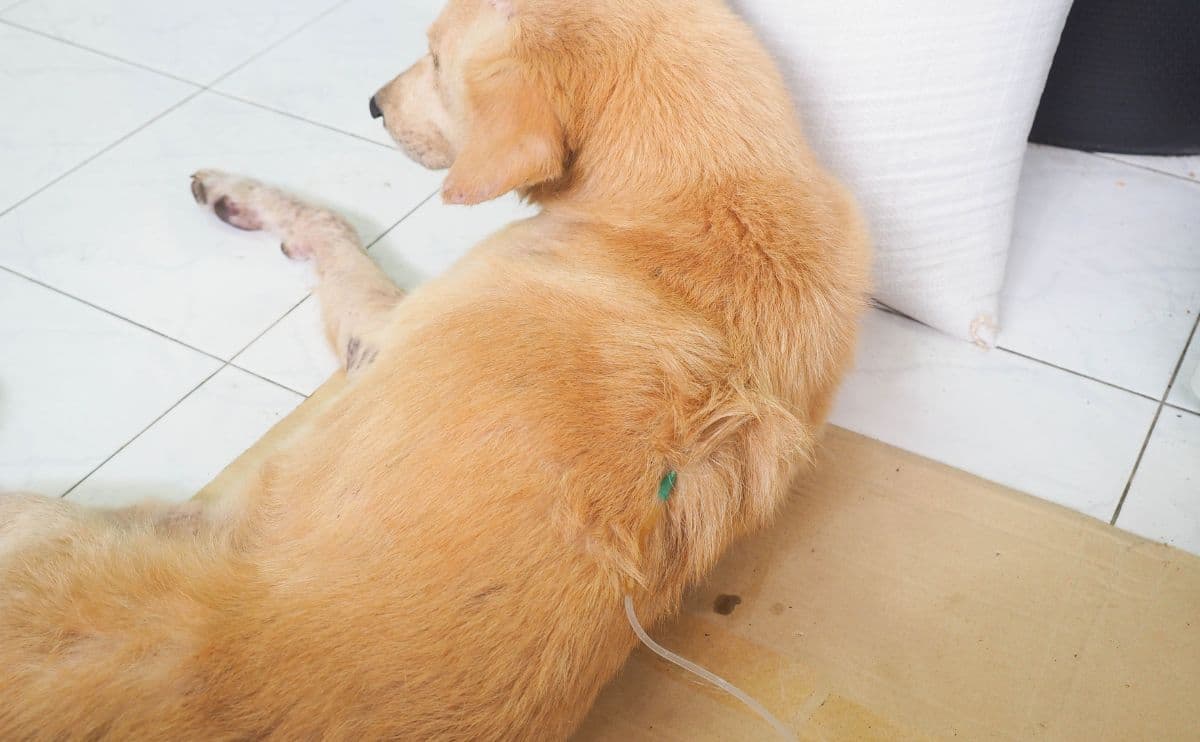When you purchase through links on our site, we may earn a commission. Here’s how it works.

Has your dog been scratching or rubbing her ears more than usual? How can you tell if it’s just normal “ear play” or if there’s something to worry about? Ear infections in dogs is one of the most common problems veterinarians see, but it’s difficult as a dog owner to decipher what’s exactly going on with your pup and when you should seek treatment. Read further to get our tips about how to spot, treat and prevent dog ear infections. It’s important not to wait until it becomes a serious problem for your pup!
What Causes Canine Ear Infections?
Dogs are particularly susceptible to ear infections because their ear canals are more vertical than humans. This makes it possible for more irritants to get lodged in their ears. Dogs with allergies or floppy ears are at greater risk, and there are also certain breeds that are more prone to ear infections, including Cocker Spaniels, Basset Hounds, Golden and Labrador Retrievers, Poodles and Schnauzers. And if your pup has a lot of fur in her ear canal, she could also be more susceptible.
The most common cause of ear infection in dogs is excessive growth of bacteria and yeast in the ear canal. What causes this growth? Ear mites, excessive ear wax or hair growth in the ear canal, a tumor, trapped water, debris or a foreign body lodged in the ear canal, can all cause excessive growth of bacteria and yeast in the outer ear canal.
How Do You Recognize Dog Ear Infection Symptoms?
When it comes to your dog possibly being sick, it’s best not to play it by ear. If left untreated, dog ear infections can be pretty painful and can lead to ear canal damage or even middle ear damage. If your pup is showing any of these signs, she could have an ear infection and should see a veterinarian.
- Dog keeps shaking head (learn more about why your dog shakes)
- Dog scratching ear or areas around her ears
- Redness or swelling (learn more about dog ear hematoma)
- Ear odor
- Yellow, brown or bloody discharge
- Fur loss around the ear
- Scabs or crusted skin near her ear flaps
- Rubbing her ear on the floor or furniture
- Hearing loss
- Loss of balance
- Walking in circles
- Abnormal eye movements
- More aggressive behavior
What’s The Treatment?
If you notice any of the signs above, it’s time to see your veterinarian, according to the American Society for the Prevention of Cruelty to Animals. You can expect your vet to do a thorough ear inspection and possibly take a sample of her ear discharge to determine the exact cause of the infection. If her ear infection is particularly painful, your vet may sedate her in order to get to the bottom of the problem. Your vet will also do a thorough ear cleaning and prescribe an oral and/or topical medication like antibiotics. If the ear infection is extremely severe, your dog may have to get x-rays, lab tests and even surgery.
Did You Know?
Once You Get Home
After getting home, it’s up to you to heal your pup. Make sure you follow all of your veterinarian’s instructions and use all the medication prescribed. Clean your dog’s ears regularly with the recommended product and make sure no water gets inside her ears, as this could exacerbate the infection or prevent the medication from doing its job. Be sure to reward your pooch after you clean her ears and administer her medication. It’s a stressful process for her.
Watch the following video by the Colorado State University College of Veterinary Medicine to get further tips on how to diagnose and treat dog ear infections.
How Can You Prevent Ear Infection In Dogs?
There are a number of preventative measures you can take to protect your dog from getting ear infections.
- Make sure you clear water out of your dog’s ears after a bath or after playing in a body of water — dry her ears thoroughly after any water activities.
- Remove any excessive fur out of your dog’s ears. Some dogs have a lot of fur growth in their ears, so make sure you or a groomer keep it trimmed.
- Check your dog’s ears daily for any abnormal signs, including puss, discharge, ear odor, swelling or redness.
- Clean your dog’s ears regularly, especially if they have floppy ears. Read our article, Tips on How to Clean Dogs’ Ears, for how to clean them properly.
Why Is It Crucial To Seek Treatment Now?
If you’ve noticed any of the signs we’ve pointed out, don’t wait to consult your veterinarian. It’s better to err on the side of caution. Dogs are much more prone to developing ear infections than our other furry friends, and they can’t express the pain and suffering they experience with infections. Don’t wait until your dog is in agony and develops a much worse infection that can be permanently damaging for her hearing and ultimately her quality of life.
Tagged With: Ears

